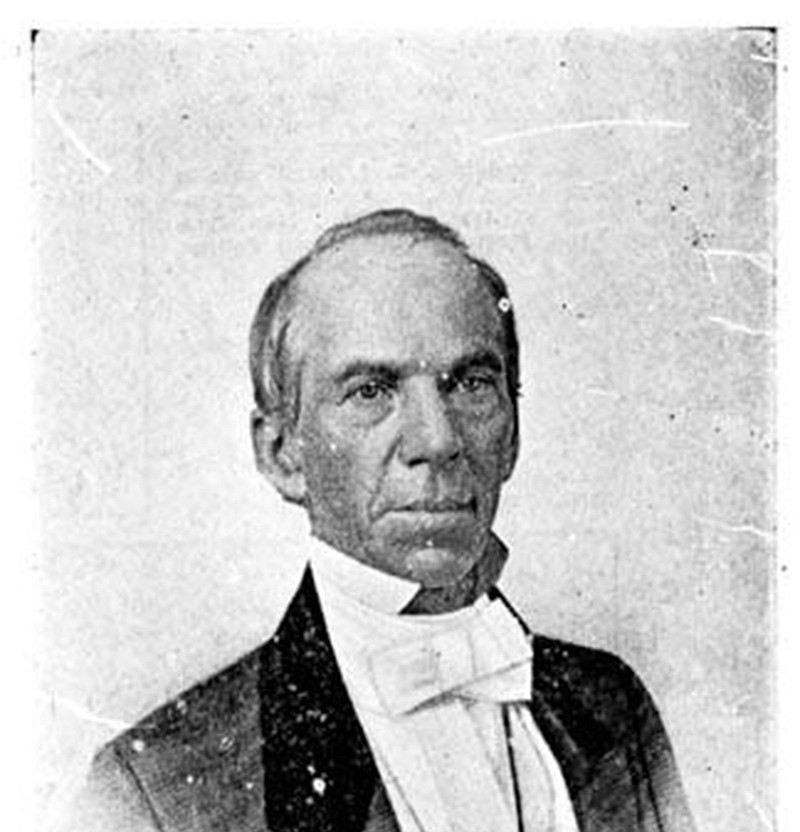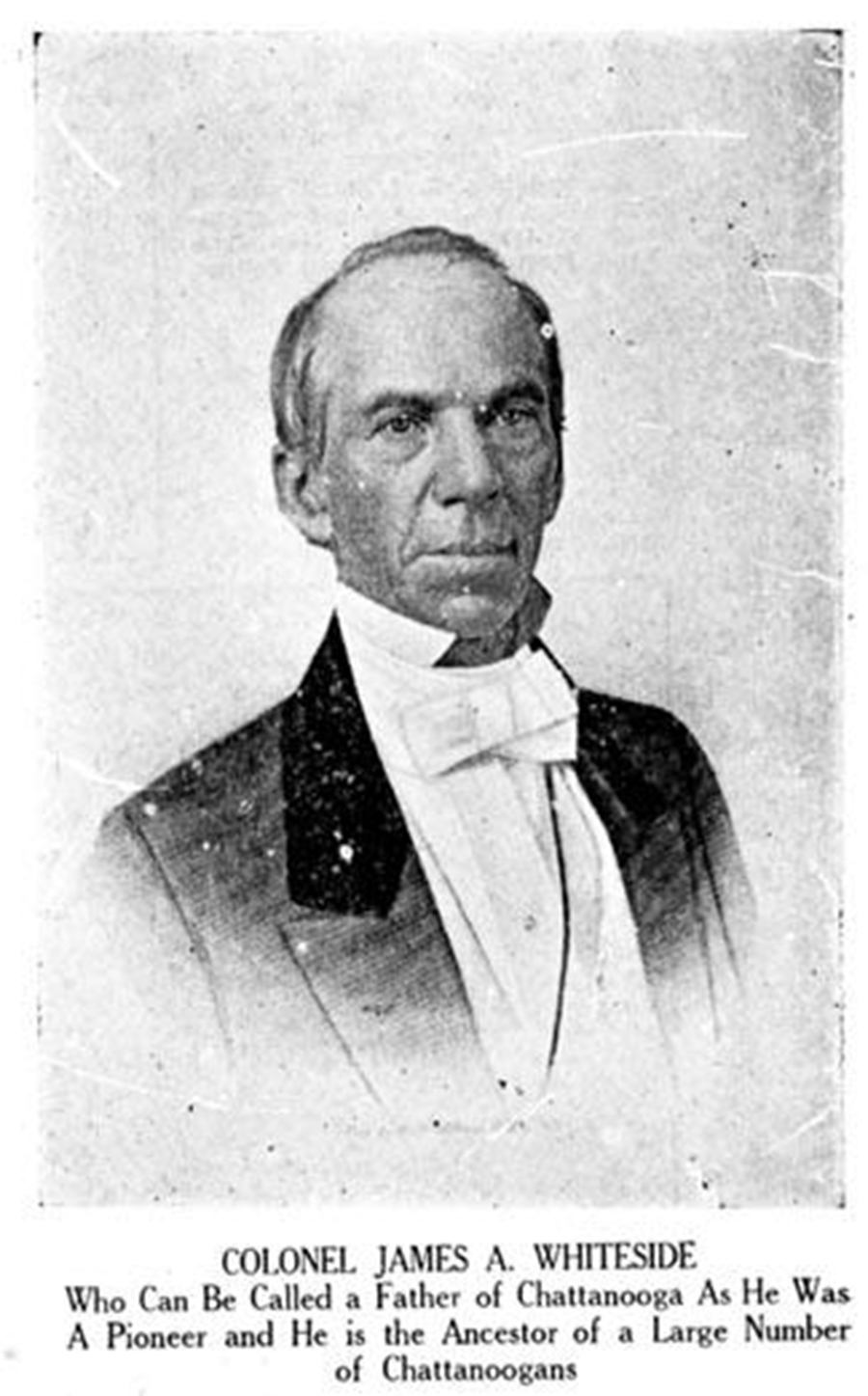Before the last Cherokees departed on the Trail of Tears in the late fall of 1838, entrepreneurs were laying plans to acquire the lands they vacated.
Among them were wealthy investors in South Carolina and Georgia, who formed the Hines and Hargrove land acquisition companies. James Anderson Whiteside, a 35-year-old lawyer in nearby Pikeville, Tenn., bought a one-ninth interest in these syndicates from local representatives Samuel and George Williams. He quickly became instrumental in guiding the future of the new town of Chattanooga.
Born Sept. 1, 1803, to Jonathan and Thankful Anderson Whiteside near Danville, Ky., he migrated with his family to Overton County and then to Pikeville. He became a lawyer and was elected to the state legislature, where he met his wife Mary Jane Massengale of Grainger County. They married Feb. 5, 1829, and set up housekeeping in Pikeville, where their five children were born.
The Whitesides moved to Chattanooga in September 1838. Two years later they occupied a fine brick house on Poplar Street. His wife died in April of 1843, and 10 months later he married the children's music teacher, Harriet Leonora Straw, with whom he had nine more children.
He took the lead in promoting railroad development and was influential in securing the location of the Tennessee terminus of the Western & Atlantic Railroad for Chattanooga.
During his service in the House of Representatives from Hamilton County, Whiteside introduced a bill in the legislature that secured a charter for the Nashville & Chattanooga Railroad Co. on Dec. 11, 1845. He and Col. Vernon K. Stevenson worked together to promote and build the Nashville & Chattanooga Railroad. In 1857, Col. Whiteside became its vice president and moved to Nashville to direct operations until the outbreak of the Civil War.
He attracted a large donation from the city of Charleston, S.C., toward the construction of the Memphis & Charleston Railroad and helped bring the East Tennessee, Virginia & Georgia Railroad to Chattanooga. He was both a promoter and financing director of the Wills' Valley Railroad.
Whiteside acquired large tracts of forested wilderness on Lookout Mountain. In 1848, he obtained a charter for the Lookout Mountain Turnpike, built under his direction in the early 1850s by George Foster, who took charge of the gate and tolls.
After several cottages were built on the mountain, Col. Whiteside decided to construct a hotel and 25 cottages on the eastern brow above Leonora Spring for summer visitors. The opening of the hotel on June 1, 1858, marked the beginning of Chattanooga's tourism industry.
A year earlier Col. Whiteside, through his friendship with James Hervey Otey, first Episcopal Bishop of Tennessee, had invited delegates of the Episcopal Church from throughout the South to consider Lookout Mountain as the location for the University of the South. The gala event was held on July 4, 1857. All favored the site; but concern about adequate water led them to select Sewanee a year later.
An Episcopalian himself, Whiteside gave land and funds to build St. Paul's, Chattanooga's first Episcopal church, on Chestnut Street and supported the Methodist and Presbyterian churches as well.
Whiteside also left his mark on Chattanooga's cultural life. In the late 1850s, he enticed Scottish-born artist James Cameron (1817-1882) and his wife to Chattanooga with an offer of land on what is known as Cameron Hill. Cameron painted the iconic portrait of Whiteside at Point Park on Lookout Mountain in 1858 or 1859. Pictured with Col. Whiteside are his wife, Harriet, their son, Charles, and two slaves. The painting is in the collection of Hunter Museum of American Art.
Col. Whiteside and his wife were not only slave owners, but also ardent secessionists. Their eldest son James L., 17, enlisted in the Confederate army and was stationed with Lee in Virginia when he became ill. Col. Whiteside procured his discharge and went to get his son.
James recovered, but the exhausting trip led to his father's own illness and death on Nov. 12, 1861, at the age of 58. He left his considerable fortune to his widow.
Despite being deported to the North by the Union occupiers, she returned after the war to re-establish control of her husband's estate, managing it until her death in 1903.
In 1911, Charles McGuffey in his "Standard History of Chattanooga" praised James Anderson Whiteside as "a leading citizen" who was "temperamentally self-controlled, kindly mannered, careful and methodical in his own affairs and in those of his clients."
McGuffey particularly admired Whiteside's role as a pioneer in the field of business law.
Kay Baker Gaston has written about Harriet Whiteside in the Tennessee Historical Quarterly and the Tennessee Encyclopedia. For more, visit Chattahistoricalassoc.org.

